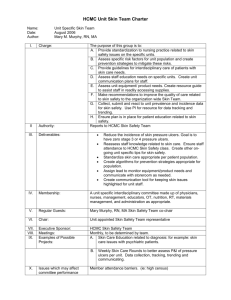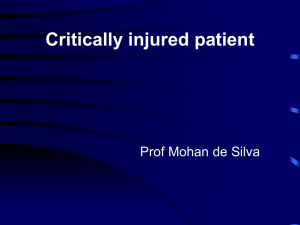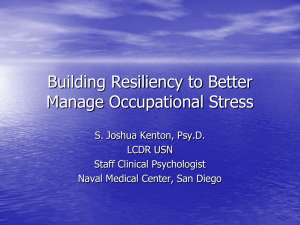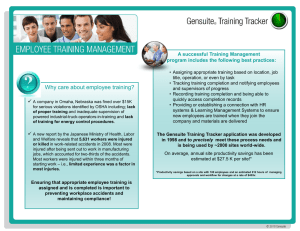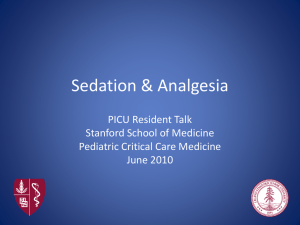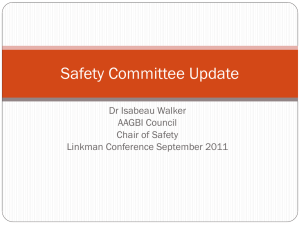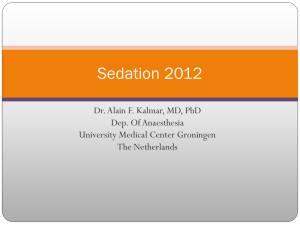Critical Care Considerations in Acute Traumatic Brain Injury Patients
advertisement
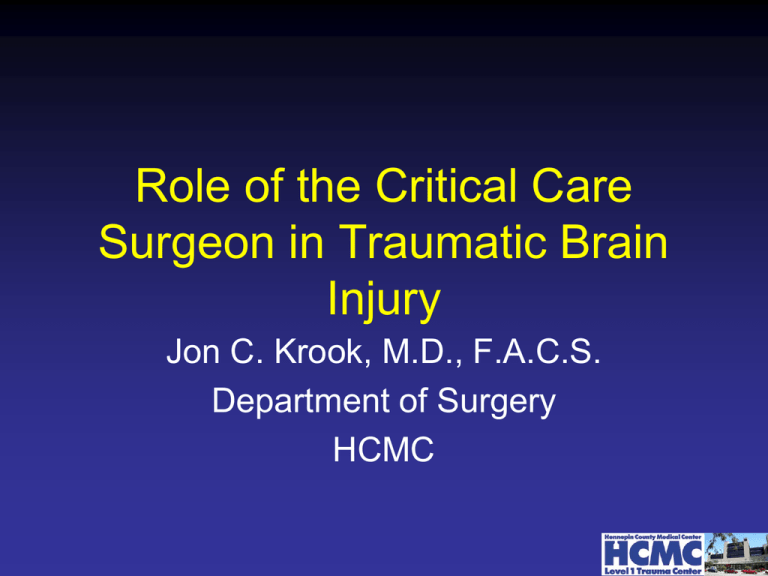
Role of the Critical Care Surgeon in Traumatic Brain Injury Jon C. Krook, M.D., F.A.C.S. Department of Surgery HCMC Case Presentation #1 • 55 y.o. female, MCA at highway speeds with no helmet – Was cut off by an auto and “laid” the bike down, was thrown from the bike – Was initially awake and talking to the first responders but became confused – 10-15 minutes later L pupil became fixed and dilated – Intubated and transported to HCMC Admission CT Post-operative CT Post-operative CT #2 Case Presentation #2 • 23 y.o. in the Air Force, suffered an accidental GSW to the left side of the head • Initially managed at another hospital and then transferred to HCMC Outside Hospital CT Outside Hospital CT PID#1 HCMC Arrival CT Initial assessment Initial evaluation of the Brain Injured Patient • ATLS primary and secondary survey ATLS Primary Survey A B C D E Airway Breathing Circulation Disability Exposure • Avoid hypoxia and hypotension – Need to prioritize injury management Initial evaluation of the Brain Injured Patient • ATLS primary and secondary survey –A–B–C– D– E- Intubate if GCS < 8 or other indication Rule out injury Evaluation/Treatment of shock Evaluation of mental status Look for other injuries – Secondary survey- comprehensive physical exam Initial evaluation of the Brain Injured Patient • Imaging – Chest, pelvic, +/- c-spine x-rays – FAST exam – Head CT • + LOC • Altered mental status on evaluation • Surgery – Head or other • Prioritization General critical care concepts specific to the head injured patient Critical Care Evaluation • All early management of the head injured patient is aimed toward limiting secondary brain injury • Avoid hypotension or hypoxia • Preserve oxygen delivery to the uninjured brain Monro/Kellie Doctrine Brain CSF Blood Herniation • Supertentorial Herniation – – – – 1 Uncal (transtentorial) 2 Central 3 Cingulate (subfalcine) 4 Transcalvarial • Infratentorial – 5 Upward (upward cerebellar) – 6 Tonsilar (downward cerebellar) http://en.wikipedia.org/wiki/Brain_herniation Intracranial Pressure Monitoring • Types – Bolt (subdural screw) – Epidural sensor – Ventriculostomy • Diagnostic • Therapeutic Cerebral Perfusion Pressure CCP= MAP - ICP Preserving MAP • Can be challenging in the face of other injuries – Shock • Hypovolemic/hemorrhagic • Cardiogenic • Neurologic • Vasopressors – Can have downsides • May increase driving pressure, but may decrease overall blood flow to the brain Lowering ICP • Options – Sedation – Draining CSF – Hyperosmolar therapy Triangle of ICU Sedation Analgesia Anxiolytics/Sedation Paralytics Delirium Sedation • Propofol – Rapid onset, short duration of action • Important in awaking trials – Depresses cerebral metabolism – Reduces cerebral oxygen consumption – Possibly reduces ICPs through direct methods Sedation • Fentanyl – Rapid onset, short duration of action – Usually given as a drip • Some evidence of worsening of CCP (BP, ICP) with bolus Hyperosmolar Therapy • Mannitol – Osmotic diuretic – Can cause hypotension – Fairly quick onset • Hypertonic saline – Osmotic diuretic – Does not cause hypotension – May increase CPP Phenobarbital Coma • Not done anymore at HCMC – Supplanted by iatrogenic hypothermia • Requires intensive monitoring • Downsides to Phenobarbital – Pneumonia – Feeding intolerance – Cardiac depression • Hypotension from phenobarbital erases any beneficial effect Hypothermia • Current practice at HCMC • Better outcomes in most RCTs examining hypothermia – Mixed results regarding mortality • None showing worse mortality • Some showing improved mortality – All RCTs report improved GOS (Glasgow Outcome Scale) in those treated with hypothermia Decompressive crainectomy • Neurosurgical decision • Violates the Monro-Kellie Doctrine Anti-Seizure Prophylaxis • Post Traumatic Seizures (PTS) – Early < 7 days – Late > 7 days • No evidence that routine prophylaxis decreases late seizures • Anti-seizure prophylaxis effective in early seizures Anti-Seizure Prophylaxis • Indications for treatment – GCS < 10 – Cortical contusion – Depressed skull fracture – Subdural hematoma – Intracerebral hematoma – Penetrating head wound – Seizure within 24 h of injury Steroids • Only level I data from the Brain Trauma Foundation Guidelines is don’t use steroids General Critical Care Concepts Ventilatory Management • Most significant head injuries get intubated at some point for airway protection • Some are on significant sedation to impact their ICP • Most weaning protocols end with the assessment of the patient’s ability to follow commands • Therefore many are on ventilators for some time Ventilatory Management • Most head injured patients have normal lungs – They don’t all stay that way Ventilatory Management Infection prevention/treatment • • • • VAP prevention Catheter infection prevention Urinary catheter infection prevention Fever work ups – Five W’s • • • • • Wind Water Wounds Walking Wonder Drugs Nutrition VTE Prophylaxis • VTE= VenoThromboEmbolism • Risk of developing DVT in severe brain injury about 20% • Best treatment is prevention • No good data on timing – DEEP study out of Parkland • IVC Filters Other conditions • Head injured patients are already complicated – Adding other injuries adds to the complexity • Gatekeeper Ethics • Family discussions • Difficult to predict level of long term impairment sometimes • There can be fates worse than death • Comfort Care Case Presentation #1 • Fixed and dilated pupils • + Corneals and gag reflexes • Withdraws upper extremities, flexion posturing lower extremities • Intensive family discussions • Comfort care Case Presentation #2 • Localized to pain on arrival • Ventriculostomy placed • ICPs high – All efforts employed including cooling • Cooled for about a week • Neurologic exam worsened on warming on HD#17 Case Presentation #2 Case Presentation #2 Conclusions • The Trauma Surgeon/Surgical Intensivist plays a core role in the care of the acute brain injured patient Questions?
